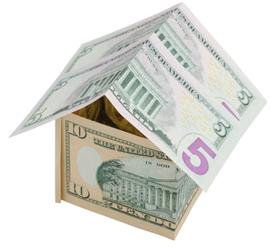LEED was developed by the U.S. Green Building Council (USGBC) in March 2000 and is an internationally-recognized green building certification system.
What does LEED do?
According to USGBC, “LEED provides building owners and operators with a framework for identifying and implementing practical and measurable green building design, construction, operations and maintenance solutions.
LEED promotes sustainable building and development practices through a suite of rating systems that recognize projects that implement strategies for better environmental and health performance. The LEED rating systems are developed through an open, consensus-based process led by LEED committees, diverse groups of volunteers representing a cross-section of the building and construction industry. Key elements of the process include a balanced and transparent committee structure, technical advisory groups that ensure scientific consistency and rigor, opportunities for stakeholder comment and review, member ballot of new rating systems, and fair and open appeals.”
What buildings does LEED work with?
LEED can be applied to either commercial or residential building types and may even be used as a framework for urban planning and design through the LEED for Neighborhood Development rating system.
What LEED rating systems are there?
LEED’s rating systems include:
– LEED for New Construction (NC)
– LEED for Existing Buildings: Operations & Maintenance (EB: O&M)
– LEED for Commercial Interiors (CI)
– LEED for Core & Shell (CS)
– LEED for Schools (SCH)
– LEED for Retail
– LEED for Healthcare (HC)
– LEED for Homes
– LEED for Neighborhood Development (ND)
Each rating system uses a different, specific approach tailored to the type of building it focuses on to measure the sustainability of a project or existing building.
For more information on the LEED green building rating systems, visitUSGBC.org.
LEED Professional Credentials
In addition to the range of certification systems for green buildings, LEED also offers a highly regarded credentialing system for green building professionals. LEED professional credentials are administered by the Green Building Certification Institute (GBCI).
LEED Green Associate
The LEED Green Associate is the entry level LEED credential for professionals interested in learning about the fundamentals of green building and the LEED rating systems.
Earning the LEED Green Associate, often referred to as LEED GA, requires passing a computerized multiple choice exam. There are certain eligibility requirements for taking the LEED GA exam, and options for becoming eligible, which we have written about here.
It is a requirement to pass the LEED Green Associate exam before advancing to the LEED Accredited Professional (LEED AP) credential.
LEED AP
The LEED AP credential is an advanced LEED credential which specifically focuses professionals on learning the ins and outs of one of the particular LEED rating systems listed above.
The LEED AP exam is a much more rigorous exam. The exam requires a lot of memorization and knowledge of specific detailed aspects of a LEED rating system. Indeed, some people have compared it to passing the bar exam.
Approaches to studying for the LEED GA and LEED AP exams differ. For people with experience working on a LEED project, it is possible to take both exams on the same day. However, it is recommended that people take the exams separately to maximize their chances for success. We have covered tips on passing the LEED AP exam here.
LEED Fellow
The LEED Fellow is the most prestigious professional designation. According to GBCI, the designation was developed to honor and recognize distinguished LEED APs who have made a significant contribution to the field of green building and sustainability at a regional, national, or international level. To earn this designation a person must be nominated by their peers. Once a person is nominated, they will be evaluated along for or five “mastery levels” including:
– Technical Proficiency
– Education and Mentoring
– Leadership
– Commitment and Service
– Advocacy









